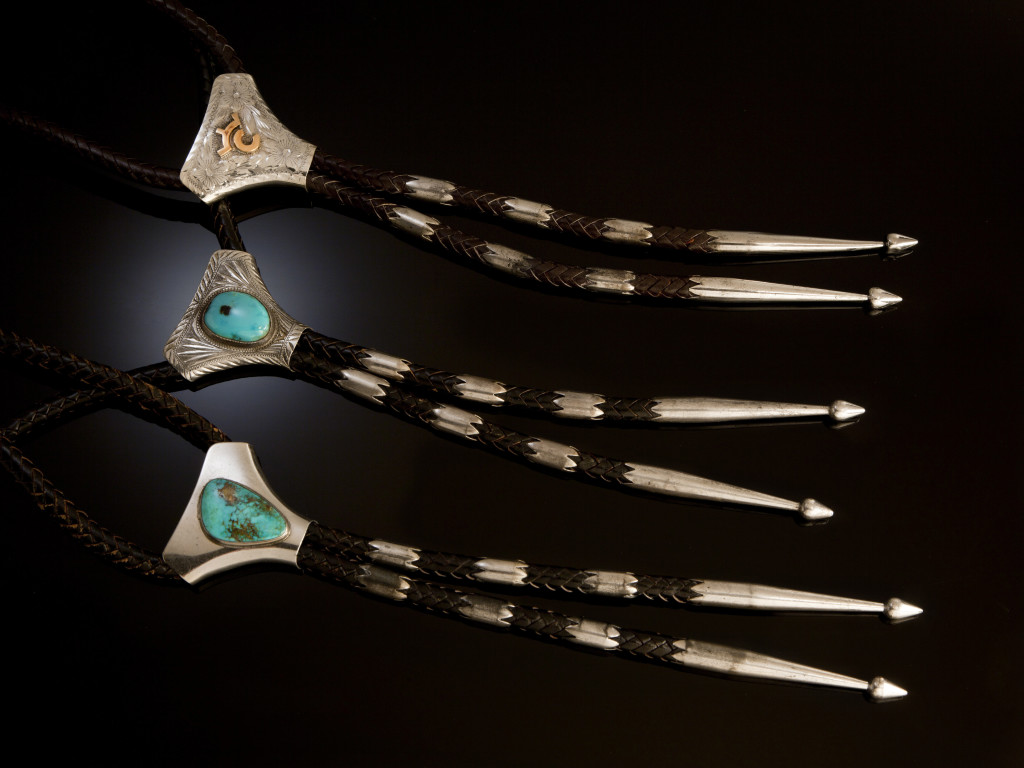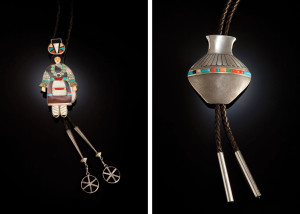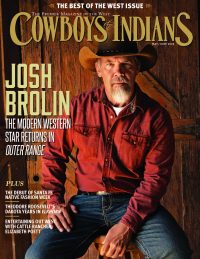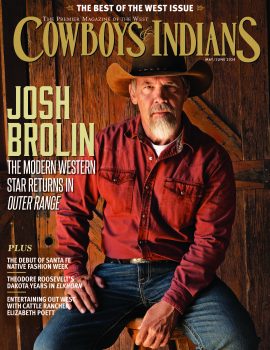
A traveling exhibition examines the history and artistry behind the Southwest’s most iconic neckwear.
The bolo tie has gone by many names since it first emerged onto the fashion scene in the 1940s. It’s been called the bolo tie, bola tie, cowboy tie, and a handful of others. And even before what is generally recognized as a bolo tie today, the scarf slide was adorning the neck on many men in the Southwest.
As a symbol of the relaxed and rugged nature of the American West, the bolo tie directly contradicted the business suits of the East Coast. Commercially available by 1956, the bolo tie became instantly recognizable, and the silver and leather look has been adopted as the official state neckwear in Texas, New Mexico, and Arizona.
Native American jewelers and silversmiths in the Southwest added their creative touch to the pieces by creating unique and colorful designs with detailed silverwork and inlaid turquoise.
And now the bolo tie is making its fashion comeback with a traveling exhibition.

Native American Bolo Ties: Vintage and Contemporary Artistry explores the history of bolo ties, taking a look back at its antecedents such as Victorian neckwear and scarf slides. The exhibit also looks at the different patents that have been issued regarding the backing of the bolo tie and how they help date the design.
Included in Native American Bolo Ties are pieces from the collection of Chicago collection Norman L. Sandfield, who has more than 1,000 bolo ties and scarf slides. The exhibit also includes bolo ties from the Heard Museum of Native Cultures and Art, which has a permanent collection of more than 170. From the Heard Museum collection, an early scarf slide by Leekya Deyuse (Zuni Pueblo) that was made during the 1930s–’40s will also be on display.
In addition to looking at individual pieces, the exhibit features a look increase in popularity of the accessory. Relating the rise in popularity of the bolo tie with the popular culture of the 1950s, the exhibition examines TV westerns and the characters that donned the neckwear, such as the Cisco Kid and Hopalong Cassidy, who was recognizable in his gold and silver longhorn scarf slide during his time on TV during the 1950s.
The exhibit is on display at the Gilcrease Museum in Tulsa, Oklahoma, through January 3, 2016. Then, the exhibition will be at the National Cowboy & Western Heritage Museum in Oklahoma City from February 5 through May 8, 2016.













